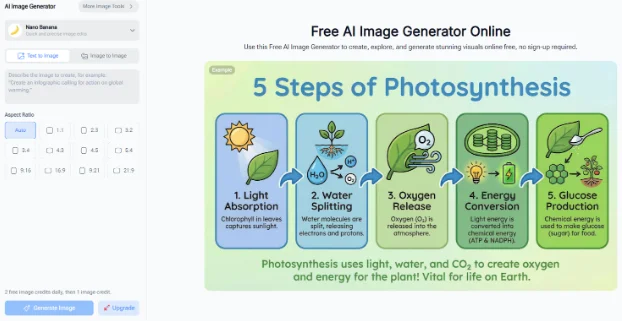Unveiling the Power and Precision of Account-Based Marketing

Introduction:
Account-Based Marketing (ABM) has emerged as a strategic approach to personalized B2B marketing, focusing on individual target accounts rather than a broader audience. This personalized approach, focusing on individual target accounts, stands as a beacon in the sea of conventional marketing strategies. To gain a deeper understanding of the intricacies and benefits of ABM, learn more about ABM through our comprehensive guide. Explore how this tailored strategy can revolutionize your B2B marketing efforts and drive unprecedented success.
Defining Account-Based Marketing:
At its core, Account-Based Marketing is a precision-guided strategy that synchronizes sales and marketing efforts to engage and nurture specific high-value accounts. Unlike the more traditional, broad-stroke marketing strategies, ABM tailors content, messaging, and outreach to resonate with the unique needs and characteristics of individual accounts. This personalized touch fosters deeper connections, driving more meaningful interactions and ultimately boosting conversion rates.
Key Elements of ABM:
1. Identifying Target Accounts:
ABM begins with carefully identifying and selecting high-priority target accounts. This involves a strategic collaboration between sales and marketing teams to pinpoint accounts with the highest potential for conversion and revenue. The careful selection ensures that resources are allocated where they can make the most significant impact.
2. Personalized Content and Messaging:
The heart of ABM lies in its ability to tailor content and messaging to the specific challenges, pain points, and goals of the target accounts. This individualized approach not only sets ABM apart but also positions it as a strategy that speaks directly to the needs of potential clients, fostering a more profound and impactful engagement.
3. Multi-Channel Engagement:
ABM adopts a multi-channel approach, leveraging a variety of channels such as email, social media, and personalized events. This strategic use of multiple channels ensures that marketing efforts reach and engage key decision-makers within the target accounts. This comprehensive engagement strategy increases visibility and enhances the likelihood of capturing the attention of key stakeholders.
While ABM and inbound marketing share the overarching goal of attracting and retaining customers, their approaches are distinct and serve different purposes within the marketing spectrum.
1. Scope and Targeting:
ABM’s focus on a selected few high-value accounts sharply contrasts with the broader reach of inbound marketing. Inbound marketing casts a wide net, targeting a larger audience with the aim of attracting leads organically through content creation and search engine optimization.
2. Proactive vs. Reactive:
ABM is inherently proactive, involving actively seeking and engaging with high-priority accounts. Inbound marketing, on the other hand, takes a more reactive stance, relying on the creation of valuable content to attract potential customers to the business.
3. Measuring Success:
Success metrics for ABM often revolve around the depth of engagement and conversion within targeted accounts. Inbound marketing success, on the contrary, is typically measured through metrics like website traffic, lead generation, and the overall performance of content created for a broader audience.
Exploring Other Marketing Strategies:
While ABM has rightfully earned its place as a personalized marketing juggernaut, a comprehensive marketing strategy often involves a mix of approaches to cater to different stages of the customer journey. Beyond the precision of ABM, content marketing plays a pivotal role in building brand awareness and nurturing leads organically. Creating valuable and relevant content establishes your brand as an industry authority, drawing in potential customers seeking valuable insights.
Social media strategies also form a crucial component of a well-rounded marketing mix. Platforms like LinkedIn, Twitter, and Instagram provide avenues for connecting with a broader audience, facilitating engagement, and showcasing the human side of your brand. Integrating social media efforts with ABM can amplify your reach, creating a harmonious blend of personalized interactions and broader visibility.
Moreover, email marketing remains a stalwart in the world of digital marketing. Crafting targeted email campaigns allows you to nurture relationships with both high-priority accounts and a broader audience. Effective segmentation and personalization in email content can enhance engagement and drive conversions. Balancing the tailored approach of ABM with the broader reach of email campaigns ensures that your marketing efforts cover a spectrum of potential customers.
Difference between Account-Based Marketing and Inbound Marketing:
To make informed decisions about your marketing strategy, it is crucial to understand the difference between ABM and inbound marketing. Explore our comprehensive analysis to gain insights into these two powerful approaches. While ABM hones in on specific high-value accounts, inbound marketing casts a wider net, attracting leads through valuable content. Understanding the strengths and weaknesses of each approach empowers you to tailor your strategy based on your business goals and target audience.
Beyond their targeting scope, another key distinction lies in the timing of engagement. ABM is proactive, focusing on reaching out to high-value accounts through personalized campaigns and outreach efforts. In contrast, inbound marketing operates on a more reactive model, positioning your brand to be discovered by potential leads as they actively seek information. This difference in timing necessitates distinct approaches in content creation and delivery to align with the buyer’s journey.
Moreover, the nature of the relationship cultivated with leads varies between the two strategies. ABM often fosters more direct, one-to-one relationships with decision-makers within target accounts, aiming for a personalized and tailored experience. In contrast, inbound marketing establishes a broader, community-oriented relationship by providing valuable content to a larger audience, nurturing relationships at scale. Recognizing these nuanced differences allows you to strategically blend both approaches or prioritize one over the other based on your business objectives and the dynamics of your target market.
Conclusion:
As we navigate the dynamic landscape of B2B marketing, Account-Based Marketing stands tall as a beacon of precision and personalization. By focusing on individual accounts and tailoring strategies to their unique needs, ABM proves its worth in fostering meaningful connections. Understanding the nuances of ABM, its differences from inbound marketing, and its integration with other marketing strategies like ABM using Linkedin is key to navigating the ever-changing marketing landscape successfully. Embrace the power of Account-Based Marketing and chart a course for more targeted, impactful B2B marketing endeavors.

Hy Vee Huddle: A Complete Informational Guide

The Connection Between Accounting Firms And Regulatory Compliance

Why Smart Startups Choose Custom AI Business Solutions Today

The Digital Lifeline: How Technology is Revolutionizing Addiction Recovery

From Clicks to Clients: Why Trust-First Local SEO Wins the Long Game

Forgot Your iPhone Password? Here’s How to Unlock It Easily

How Strikes and Step Through Bikes Are Using Tech for Better Range

NoteGPT AI Image Generator: Transforming Branding and Marketing








